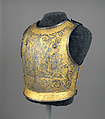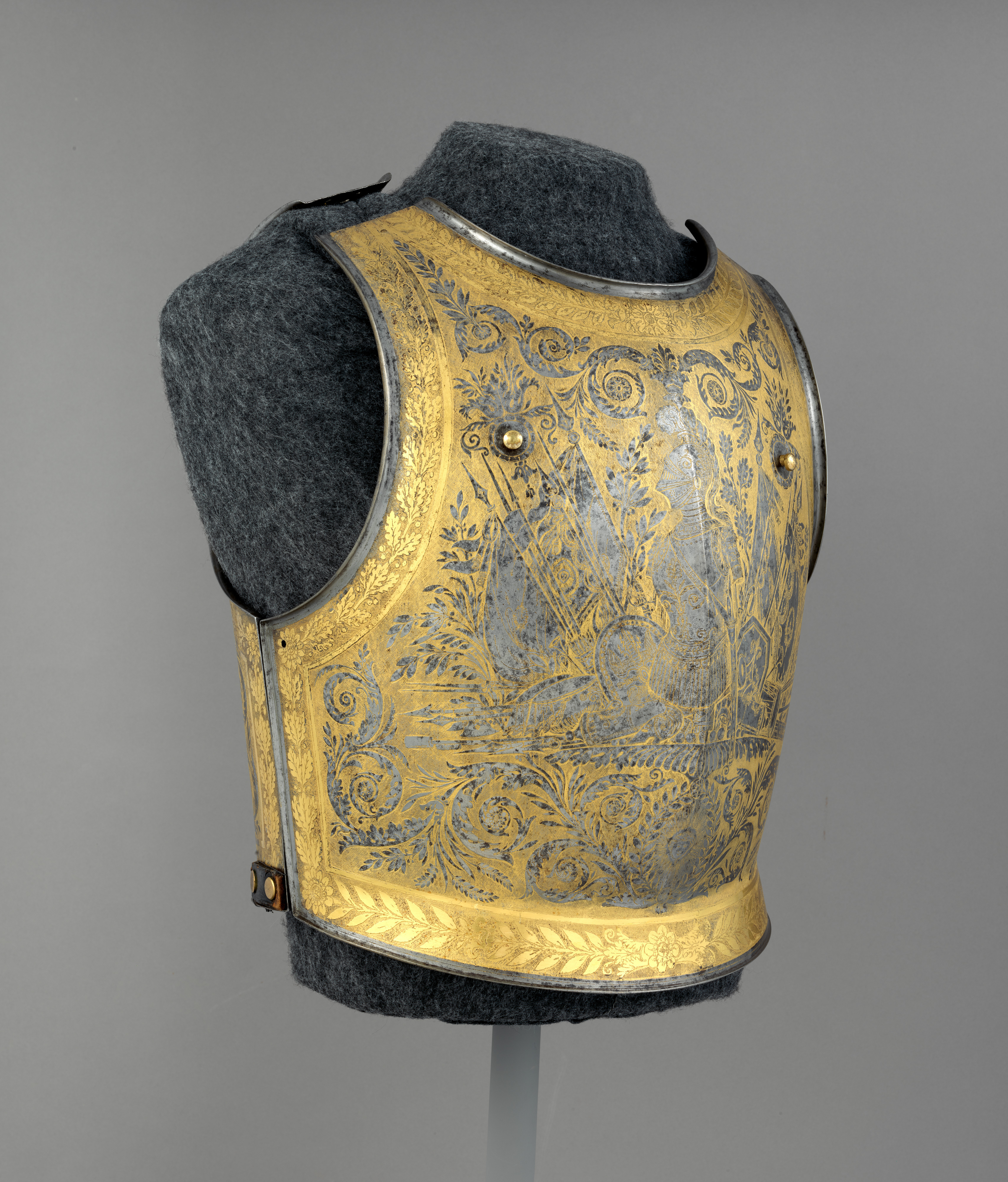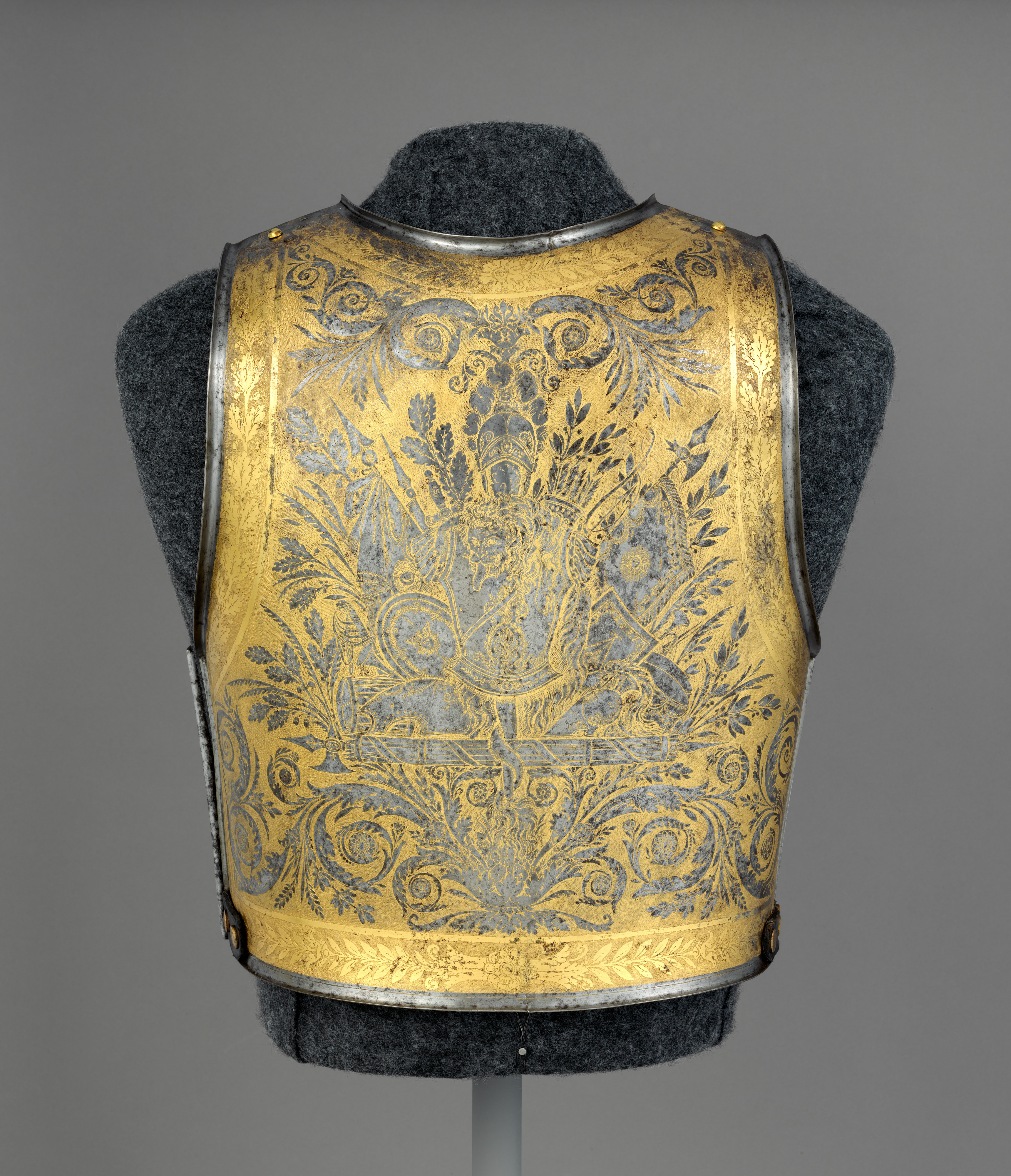Cuirass
Manufactured at Coulaux Frères, Manufacture Royale d'Armes de Klingenthal French
Designed by François-Joseph Bisch French
Etched and gilt by François-Xavier Bisch French
Not on view
This is one of only two known cuirasses with rich etched and gilt ornamentation dating from the restoration of the French monarchy, and a very rare example of nineteenth-century luxury armor. Forged and decorated in the Royal manufactory of Arms at Klingenthal in Alsace, it was probably specially ordered by François Marie Louis Victor, baron de Latour-Foissac (1784–1851) in anticipation of the coronation of Charles X of Bourbon (1757–1836, reigned 1824 to 1830) on May 29, 1825, in Reims. As the colonel of the Regiment of the Queen’s Cuirassiers, Latour-Foissac was the commander of the detachment that would escort the royal carriage during the solemn procession to Reims’ cathedral. Because of his age and declining health, however, Latour-Foissac, a seasoned veteran from the French Revolutionary and Napoleonic wars, obtained permission to retire from active duty on May 23, 1825, only two days before the coronation. The cuirass was perhaps borrowed by his successor, the count de Sainte-Marie, who would not have had the time to have another one made for his own use at the ceremony.
Closely related in construction to the standard pattern of 1825, the cuirass is remarkable for the large scale and accomplished etched and gilded ornamentation of its surfaces with trophies of arms and foliage. In conception and execution the décor exhibits notable similarities to the blades of luxury sabers and swords made for high-ranking French military officers in the Klingenthal manufactory from the Directoire (October 26, 1795–November 9, 1799) through the monarchical Restauration (April 6, 1814–July 29, 1830) periods.
A close comparison with edged weapons produced in Klingenthal leaves little doubt that the cuirass was etched and gilded by François-Xavier Bisch (1793–1841), who after the retirement of his father, François-Joseph Bisch (1756–1831), in 1822, became the chief etcher and gilder of luxury arms at Klingenthal. The similarities in conception to the decoration of edged weapons embellished by his father during the preceding decades, however, are likely indications that the latter’s ornamental designs were used for inspiration. Evidence for a collaboration between the father and son in the mid-1820s––when the cuirass was made––is provided by a luxury saber that was made no earlier than 1824 for the Dauphin (Louis Antoine de Bourbon, duke of Angoulême, 1775–1844) and discovered in the Tuileries during the Revolution of 1830. According to a published report, the saber bore an inscription establishing that the father had supplied the ornamental design and that his son had etched and gilded it ("Variétés. Notice sur un sabre et un manuscript trouvés aux Tuileries le 29 juillet 1830," Gazette littéraire, 1829, p. 636). The cuirass, which was probably made between September 1824 (Charles X’s accession to the throne) and May 1825 (his coronation), is the likely fruit of a comparable arrangement.
Due to rights restrictions, this image cannot be enlarged, viewed at full screen, or downloaded.
This artwork is meant to be viewed from right to left. Scroll left to view more.




